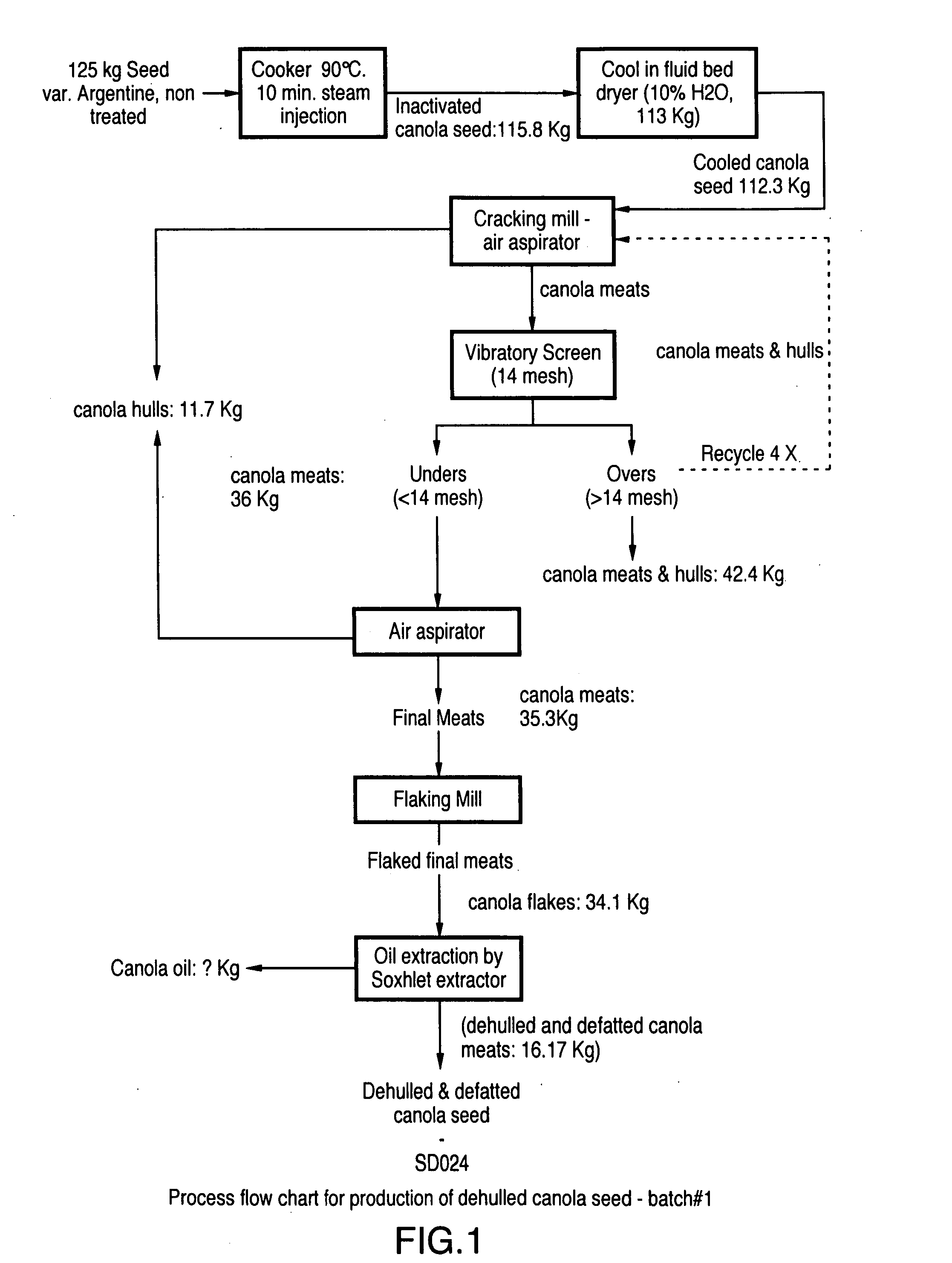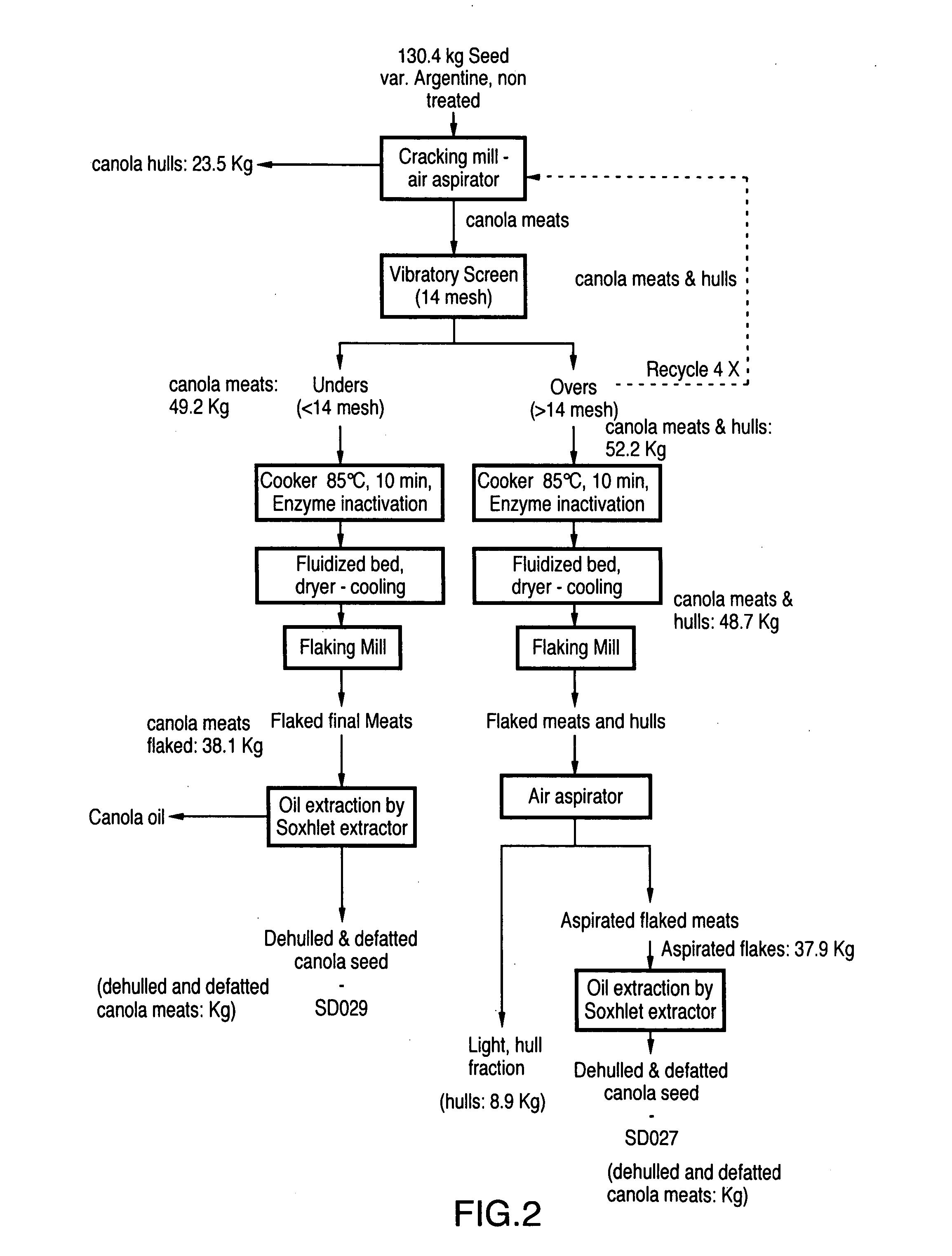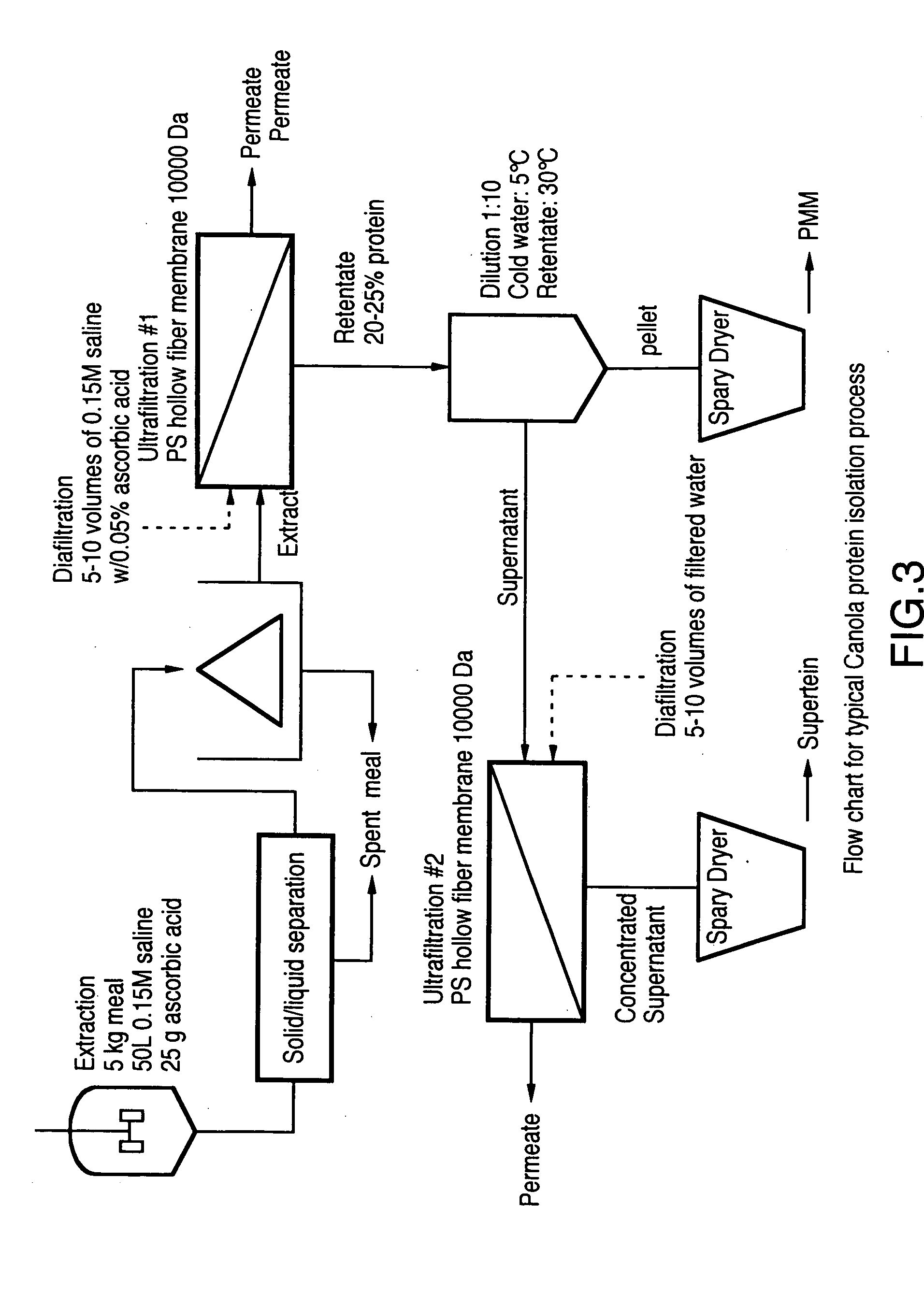Oil seed meal preparation
a technology of oil seed meal and oil seed meal, which is applied in the production of fatty-oil/fat, plant ingredients, pharmaceutical non-active ingredients, etc., can solve the problems of reducing phenolic compounds are prone to oxidation and colouring, and products of glucosinolates reduce the value of glucosinolate containing plants. , to achieve the effect of reducing the presence of components
- Summary
- Abstract
- Description
- Claims
- Application Information
AI Technical Summary
Benefits of technology
Problems solved by technology
Method used
Image
Examples
example 1
[0075] This Example describes the preparation of canola oil seed meal and the subsequent processing to obtain a canola protein isolate.
[0076] 125 kg of canola seed of the variety Argentina was processed according to the process depicted in FIG. 1. The seed was first submitted to heat treatment in a cooker heated by steam at 90° C. for a 10 minute hold time in order to deactivate myrosinase and other enzymes. After cooling the resulting 115.8 kg of inactivated canola oil in a fluid bed dryer, the seeds were cracked and the hulls were partially removed by air aspiration.
[0077] The larger canola meats (overs) were separated with a 14-mesh vibratory screen and the overs were recycled 4 times to the cracking mill to provide 42.4 kg of mainly canola meats and a smaller fraction of hulls. The unders (36 kg) were passed through final air aspiration for removal of residual hulls. The final meats (35.3 kg) or the unders fraction, were flaked by a flaking mill before passage of 34.1 kg of ca...
example 2
[0088] This Example illustrates the preparation of canola protein isolates from the defatted meals prepared according to the procedures of Example 1.
[0089] Dehulled, defatted and myrosinase-inactivated canola meals, prepared as described in Example 1, were processed according to the procedure of FIG. 3, to produce canola protein isolates.
[0090]‘a’ kg of dehulled, defatted and myrosinase inactivated canola meal was added to ‘b’ L of 0.15 M NaCl solution at ambient temperature and agitated for 30 minutes to provide an aqueous protein solution. The residual canola meal was removed by filtration through cheese cloth or by other suitable filtration methods. The resulting protein solution was clarified by centrifugation to produce ‘c’ L of a clarified protein solution having a protein content of ‘d’ g / L.
[0091] A ‘e’ L aliquot of the protein extract solution was reduced in volume to ‘f’ L by concentration on an ultrafiltration system using ‘g’ dalton molecular weight cutoff membrane. Th...
example 3
[0096] This Example describes the results obtained by following the procedures of Example 2.
[0097] (a) Extraction and Separation Steps:
[0098] Table III below represents the apparent extractabilities for the three different meals. The apparent extractability represents the percentage of protein that could be recovered if the total saline volume could be recovered. However, the recovery can vary due to differences in the meal and / or to different liquid hold-up in the meal. When the actual volume post clarification processes is taken into account for calculations, then the result is protein yield. The apparent extractability is higher than 40% for all three cases. For SD024 and SD027 meal, they are in the same order of magnitude with 47.5 wt % and 46.1 wt %, respectively. The number for the SD029 meal is slightly smaller. The apparent extractability is not significantly influenced by the dehulling and heat treatment process of the meal, as the extractability numbers are in the same r...
PUM
| Property | Measurement | Unit |
|---|---|---|
| temperatures | aaaaa | aaaaa |
| temperature | aaaaa | aaaaa |
| temperature | aaaaa | aaaaa |
Abstract
Description
Claims
Application Information
 Login to View More
Login to View More - R&D
- Intellectual Property
- Life Sciences
- Materials
- Tech Scout
- Unparalleled Data Quality
- Higher Quality Content
- 60% Fewer Hallucinations
Browse by: Latest US Patents, China's latest patents, Technical Efficacy Thesaurus, Application Domain, Technology Topic, Popular Technical Reports.
© 2025 PatSnap. All rights reserved.Legal|Privacy policy|Modern Slavery Act Transparency Statement|Sitemap|About US| Contact US: help@patsnap.com



